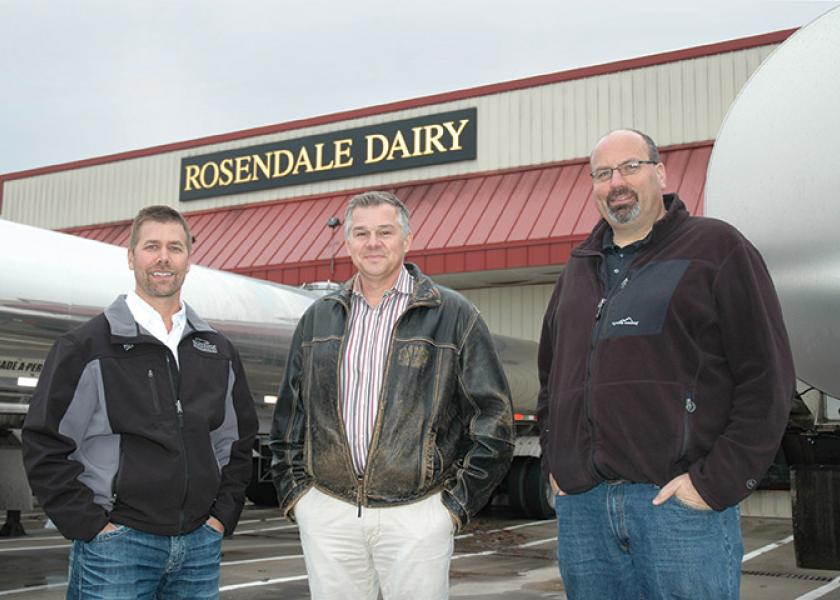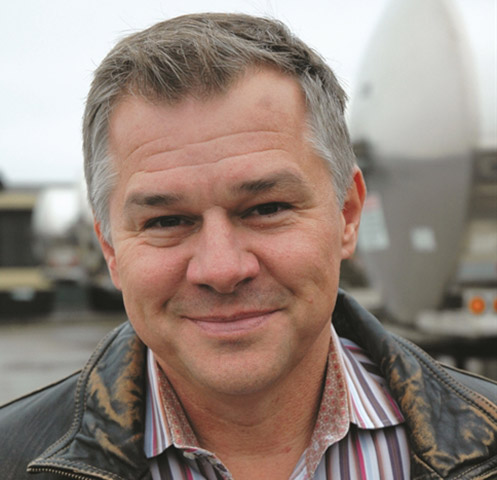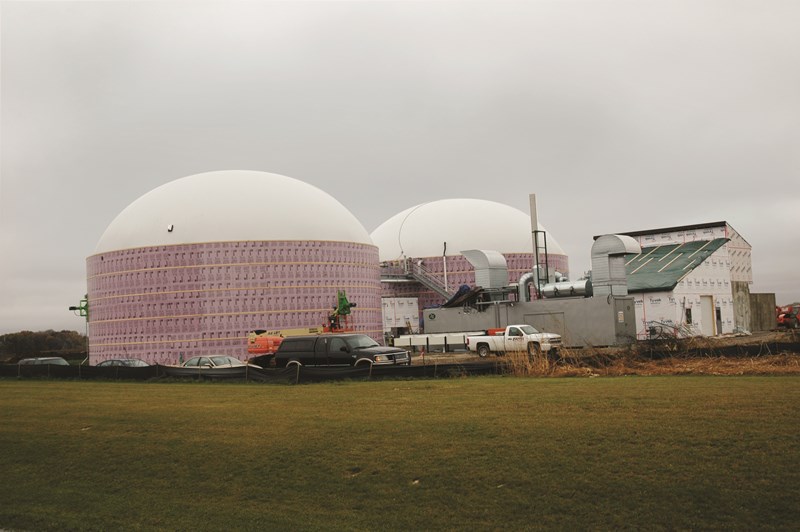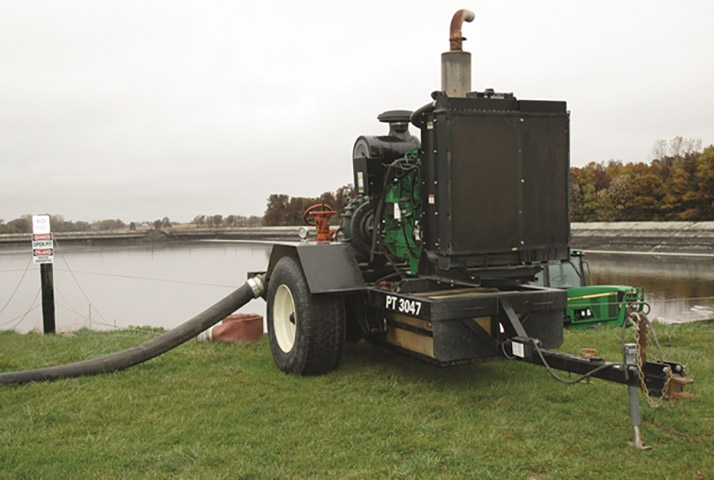The Milk Source Way

Management system key to growth for 2014's Innovative Dairy Farmers of the Year.
Milk Source owners Jim Ostrom, John Vosters and Todd Willer are quick to admit that they’re not usually the first to adopt new technology.
So it’s a bit unusual that they have been named as the 2014 Innovative Dairy Farmers of the Year by the International Dairy Foods Association and Dairy Today magazine.
Innovation, by definition, is far broader than being the first to use new, out-of-the-box gadgetry. What these eastern Wisconsin partners are very good at is taking proven technology—be it milking systems or manure separation equipment—and adapt it to their management system.
Once in place, they’ve been able to create dairy systems that allow them to replicate that success on every dairy they build or renovate.
They’ve also partnered with others, such as the University of Wisconsin-Oshkosh Foundation and Clean Energy North America (CENA) to build, operate and manage methane and biogas digesters.
This approach allows the team to focus on what they do best: milk cows, grow feed and manage people.
Bonus Content | |
| More on Milk Source, Innovative Dairy Farm of the Year program
|
Ostrom is the business manager. Vosters manages the livestock. Willer handles facility and farming operations and is the lead on building and site renovations.
All three knew each other when they attended the University of Wisconsin in the early 1990s. Ostrom and Vosters partnered in 1994; Willer joined them five years later.
The partnership has allowed the Milk Source trio to grow from 180 cows in 1994 to nearly 27,000 cows today. Sometime later this year, that number will climb another 3,000 cows as three more renovated Michigan dairies come into production.
"Milk Source is an innovative dairy farm that supports thousands of families across Wisconsin," says Ben Brancel, Wisconsin Secretary of Agriculture and one of two award nominators.
"With a dedicated staff of almost 400 employees and thousands of productive dairy animals, Milk Source is a premiere example of how innovation has allowed this farm to strengthen dairy processing in this state," he says.
"As a company, Milk Source LLC is constantly investing time, energy and resources in identifying and researching new equipment, processes and personnel to make its farms more efficient, its nutrients a more valuable commodity and its environmental footprint smaller," add David Crass and Anna Wildeman, who also nominated Milk Source for the award. Both are attorneys with Michael Best Friedrich LLP.
 |
"In our business model, it is essential to grow," says Jim Ostrom. "We’re a more intense, higher input operation that requires higher output." |
Milk Source numbers are impressive:
- Tidy View Dairy in Kaukauna, Wis., was the original farm owned by John’s dad, Ted. Ostrom joined the operation in 1994, hoping to grow the dairy from 180 cows to 600. It now milks 6,800 cows.
- Omro Dairy near Omro, Wis., had failed three times prior to Milk Source purchasing it in 1999. because of poor design, cows never milked well in the facility. But after remodeling and switching to 3X milking to reduce holding pen time and allowing more frequent cleaning, production jumped. The 2,700-cow Omro Dairy was Milk Source’s highest producing herd last year.
- Rosendale Dairy in Pickett, Wis., milks 8,400 cows in two massive, cross-ventilated barns that milk with two 80-cow rotaries. Built in 2008-09, it utilizes a state-of-the-art manure separation technology that reclaims 90% of the sand bedding. More than five miles of pipe is
- being laid to pump manure water, with most of the solids removed, to fields for fertilizer. The system will remove some 100,000 tanker loads of manure from local roads.
- Last July, Milk Source partnered with the University of Wisconsin-Oshkosh (UW-O) Foundation to build a $10 million biogas plant across the fence from the Rosendale Dairy. It will eventually capture 1.4 megawatts of electricity that will be returned to the grid. UW-O students will also be trained at the facility. A $700,000 public education center and UW-O off-campus laboratory are also in the site’s future.
- New Chester Dairy in Grand Marsh, Wis., built in 2012, is a near replica of Rosendale Dairy. It milks 8,400 cows through double 80-cow rotaries and houses cows in cross-vent barns.
- Here, Milk Source has licensed CENA to convert cow manure into biogas; it will be piped 15 miles to Brakebush Brothers, a frozen chicken products manufacturer. Here, the biogas will be converted to 7.5 megawatts of electricity and provide about 30% of the heat needed to cook chicken at the processing plant. (Chicken offal and food waste will also be used in the digesters to recycle material and boost digester efficiency.)
- Finally, there’s Milk Source Genetics, a 50-cow show place of elite Red & White and Black & White Holstein show genetics. In 2012, Milk Source’s Blondin Redman Seisme-Red was selected as the International Red & White Cow of the Year.
 |
Two methane digester tanks under construction at Rosendale Dairy will eventally supply bio-gas to produce 1.4 million megawatts of electricity. |
Milk Source Genetics routinely uses in vitro flushing of top cows and markets their embryos around the world. It regularly shows at the Royal Winter Show in Toronto, at World Dairy Expo in Madison, Wis. and in numerous regional shows. It also offers a scholarship program for youth who purchase and show prefixed animals. These scholarships can range from $200 to $50,000.
In addition to seven milking sites, Milk Source owns a 9,000-head calf ranch (zero to six months) near De Pere, Wis. And it recently purchased a southwest Kansas feedlot near Liberal; once renovated, it will eventually house 25,000 replacement heifers.
"In our business model, it is essential to grow," Ostrom says. "We’re a more intense, higher input operation that requires higher output."
"Our people and their continued development are essential to our growth," Vosters says. "We try to grow from within, and we’ve established a successful track record for employee’s growth and development."
One of Milk Source’s lead livestock specialists, Juan Quezada, started out as a milker 16 years ago. He’s now director of safety, recruitment and training for the entire company.
The management of each dairy is structured similarly. That allows a clear path for advancement, and employees can move from one dairy to another if opportunity arises.
When Milk Source opens a new or remodeled facility, it will pull the management team from other sites. "We’ll take an existing manager to manage a new facility, and that opens up that position at the old site," Vosters says.
"There’s always a chance to move up in the company, and that really engages people. They see an opportunity to advance, raise their families here and buy a home," he says.
As a result, turnover is minimal outside of the milking parlor. More than half of the workforce has been at Milk Source for more than five years. "And if we can get a new hire through the first 90 to 120 days in the parlor, there’s a very good chance he’ll stay with us," Vosters says.
 |
High-capacity pumps move manure liquids through nearly five miles of underground piping, eliminating thousands of tanker loads each year. |
Milk Source employs nearly 400 employees, from entry-level milkers (about half the workforce) to a high-end chief financial officer, who once worked for a $2 billion retail chain.
The company has annual corporate culture training, where the Milk Source ethos, neighbor and community relations are instilled. "Here, we work with our newest, least experienced people. We spend the most time training and interacting with them to bring them into our culture," Ostrom says.
The company offers English classes for Spanish-speaking employees and a Spanish class for employees wishing to learn that language. It also recently began a cooperative venture with World Relief Fox Valley to help place refugees in the workforce. Milk Source has hired several refugees from countries such as Sudan and Eritrea.
Milk Source has also had an off-site management retreat for the company’s top 50 managers the past two years. "We talk a lot about our culture, but we bring in outside expertise to talk about personal accountability, vision and team building," Ostrom says.
Milk Source employs its own attorney, who specializes in transactional law. It also has a director of business development, director of safety, director of human resources, an accounting staff and an environmental coordinator.
"The environmental coordinator is essential because we have 90,000 acres in our nutrient management plans," Ostrom says. "We farm 16,000 acres ourselves, and we have land in three states, 12 counties and 50 townships."
Keeping all the environmental regulations straight over that geography is a huge task. "The rules of engagement in one state or county or township don’t necessarily translate to the next," Ostrom says.
Having this level of management acumen allows Milk Source to manage multiple sites across the Midwest. And if another opportunity for expansion arises, Milk Source has the in-house expertise to evaluate it.
As a practical example, Milk Source facilities use both curtain-sided and cross-ventilated barns. Because Milk Source does the accounting the same way across all facilities, it’s fairly easy to assess performance.
While cross-vent barns might be more expensive to operate, cows perform better and milk at higher levels in them. There is less heat and cold stress with cross-vents.
Bottom line: Cross-vent barns win out. Ostrom, Vosters and Willer can then use that knowledge as they assess facilities they buy, remodel or build new.
Community relations is critical for a dairy operation as large and as far-flung as Milk Source. It participates in fundraisers, supports local police, fire departments and FFA chapters, hosts breakfast on the farm and tours that annually bring more than 10,000 visitors.
But Milk Source went a step farther. Along with several other industry enthusiasts, Ostrom and Vosters are founding members of Dairy Cares of Wisconsin, which raises funds for the Milwaukee Children’s Hospital. At its first garden party in 2011, Dairy Cares raised $27,000. In 2012, it raised $60,000.
Dairy Cares has since reached out to other dairy farmers and affiliate industry such as feed suppliers, cheesemakers and equipment venders. Last year, it raised $107,000. To date, it has raised more than $200,000.
Milk Source is THE 16th Recipient
The Innovative Dairy Farmer of the Year Award is co-sponsored annually by the International Dairy Foods Association and Dairy Today magazine. Milk Source will be honored at the 2014 Dairy Forum, Jan. 26 to 29, at the JW Marriott Desert Springs in Palm Desert, Calif.
The 2013 winner was McCarty Family Farms, Rexford, Kan. Previous winners include: Sweetwater Valley Dairy Farm, Philadelphia, Tenn.; Brubaker Farms, Mount Joy, Pa.; Haubenschild Dairy Farm, Princeton, Minn.; Mason Dixon Farms, Gettysburg, Pa.; Clauss Dairy Farms, Hilmar, Calif.; Baldwin Dairy/Emerald Dairy, Emerald, Wis.; Si-Ellen Farms, Jerome, Idaho; Pagel’s Ponderosa Dairy, Kewaunee, Wis.; C Bar M Dairy, Jerome, Idaho; North Florida Holsteins, Bell, Fla.; KF Dairy, El Centro, Calif.; Joseph Gallo Farms, Atwater, Calif.; KBC Farms, Purdy, Mo.; and High Plains Dairy, Friona, Texas.







